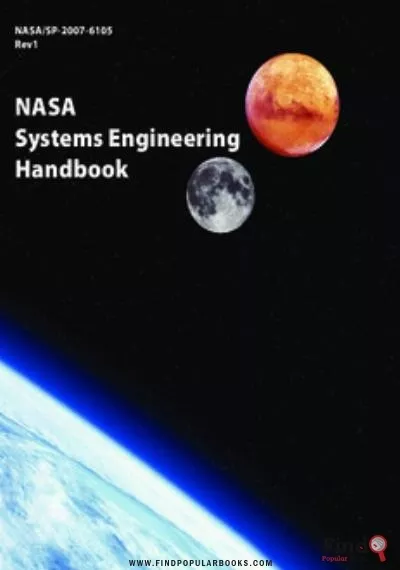
NASA Systems Engineering Handbook
Since the writing of NASA/SP-6105 in 1995, systems engineering at the
National Aeronautics and Space Administration (NASA), within national
and international standard bodies, and as a discipline has undergone
rapid evolution. Changes include implementing standards in the
International Organization for Standardization (ISO) 9000, the use of
Carnegie Mellon Software Engineering Institute’s Capability Maturity
Model® Integration (CMMI®) to improve development and delivery of
products, and the impacts of mission failures. Lessons learned on
systems engineering were documented in reports such as those by the NASA
Integrated Action Team (NIAT), the Columbia Accident Investigation
Board (CAIB), and the follow-on Diaz Report. Out of these efforts came
the NASA Office of the Chief Engineer (OCE) initiative to improve the
overall Agency systems engineering infrastructure and capability for the
efficient and effective engineering of NASA systems, to produce quality
products, and to achieve mission success. In addition, Agency policy
and requirements for systems engineering have been established. This
handbook update is a part of the OCE-sponsored Agency wide systems
engineering initiative. In 1995, SP-6105 was initially published to
bring the fundamental concepts and techniques of systems engineering to
NASA personnel in a way that recognizes the nature of NASA systems and
the NASA environment. This revision of SP-6105 maintains that original
philosophy while updating the Agency’s systems engineering body of
knowledge, providing guidance for insight into current best Agency
practices, and aligning the handbook with the new Agency systems
engineering policy. The update of this handbook was twofold: a top-down
compatibility with higher level Agency policy and a bottom-up infusion
of guidance from the NASA practitioners in the field. The approach
provided the opportunity to obtain best practices from across NASA and
bridge the information to the established NASA systems engineering
process. The attempt is to communicate principles of good practice as
well as alternative approaches rather than specify a particular way to
accomplish a task. The result embodied in this handbook is a top-level
implementation approach on the practice of systems engineering unique to
NASA. The material for updating this handbook was drawn from many
different sources, including NASA procedural requirements, field center
systems engineering handbooks and processes, as well as non-NASA systems
engineering textbooks and guides.

Contact us to let us know. You will receive an answer within 3 working days.
A big thank you for your understanding!
































